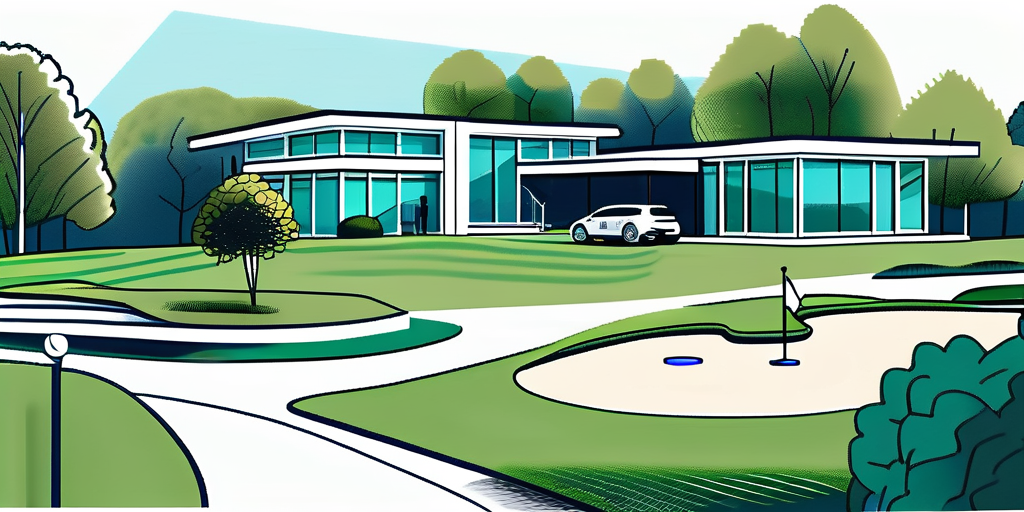
Investing in golf course living can be a lucrative venture, blending the joys of leisure with the benefits of real estate. Imagine waking up to breathtaking views, enjoying a round of golf just steps from your front door, and being part of a vibrant community. This guide will take you through all you need to know about maximizing your returns from golf course living investment.
Golf course living isn't just about the sport; it’s an appealing lifestyle that attracts many homebuyers. The unique charm of living in such a setting lies in the variety of factors that come into play, from recreational opportunities to a sense of community.
One of the most highlighted aspects of golf course homes is their luxurious feel. These properties often boast high-end finishes, spacious layouts, and eye-catching architecture. Many developments are designed to blend seamlessly with the natural landscape, enhancing the overall aesthetic appeal.
Additionally, the exclusivity of living near a golf course can drive property values up. With amenities such as clubhouses, fitness centers, and golf pro shops available to residents, the lifestyle is both enriching and enjoyable. It's about much more than just a property; it's about a way of life.
Furthermore, many golf course communities offer additional perks such as concierge services, spa facilities, and gourmet dining options, making everyday living feel like a vacation. The attention to detail in these developments is evident, from meticulously landscaped gardens to private pools and outdoor lounges that encourage relaxation and socializing among neighbors.
Living on a golf course isn't just a residential choice; it embodies a particular lifestyle. Residents often enjoy a range of social events, tournaments, and gatherings that foster community spirit and engagement. It becomes an ideal environment for those who thrive on social interaction and outdoor activities.
Moreover, the tranquility of scenic views available from golf course properties is hard to replicate elsewhere. Residents often have access to walking trails and beautiful landscapes that promote a relaxed, healthy lifestyle.
In addition to the physical beauty of the surroundings, the camaraderie among residents can create lasting friendships and a strong sense of belonging. Many communities organize regular events such as wine tastings, holiday celebrations, and themed parties, allowing residents to connect and build relationships. The shared passion for golf and outdoor activities often serves as a common bond, making it easier for newcomers to integrate into the community.
Before diving headfirst into golf course real estate, it’s essential to evaluate its investment potential. Understanding market trends and what influences property values will set you on the right path.
The golf real estate market has seen various trends over the years. In recent times, there has been a surge in interest from retirees and those looking for vacation homes. The pandemic, in particular, has reshaped the real estate landscape, with many seeking green, open spaces rather than densely populated areas.
Research indicates that properties in well-managed golf course communities tend to appreciate faster than homes in traditional neighborhoods. This trend is worth considering when assessing long-term investment potential, as it could lead to greater returns on your investment. Additionally, the rise of remote work has allowed individuals to relocate to areas with desirable amenities, such as golf courses, without the constraints of commuting. This shift has further fueled demand for properties in these scenic locales, making them increasingly attractive to investors.
Various factors influence the property value of golf course homes. Location is paramount; being near a respected and maintained golf course boosts desirability. Also, the overall reputation of the community plays a significant role. Access to quality schools, amenities, and services enhances the attractiveness of these properties.
Another consideration is the condition and amenities of the golf course itself. A well-kept and dynamic course attracts more residents, leading to higher property values. Make sure to research the course’s management, history, and community engagement, as these can all affect your investment's success. Furthermore, the availability of additional recreational facilities, such as clubhouses, swimming pools, and fitness centers, can significantly enhance the appeal of golf course communities. These amenities not only provide a higher quality of life for residents but also contribute to the overall marketability of the properties within the community, making them a key factor in your investment evaluation.
Making the right purchase in golf course living is crucial to maximizing your returns. By carefully selecting a community and a property, you are laying the groundwork for your investment.

Selecting the right community requires some homework. Look for golf communities that align with your lifestyle preferences and investment goals. Features such as clubhouse facilities, fitness options, and social events may be indicators of a vibrant community.
Moreover, consider the demographics and culture of the community. If you're looking for a family-friendly environment, find communities that cater to families and children. Alternatively, if you're interested in a more peaceful, retirement-oriented community, make that a priority in your search. Engaging with current residents can provide invaluable insights into the community’s atmosphere and activities, helping you gauge whether it’s the right fit for you.
Additionally, evaluate the amenities available in the area surrounding the golf community. Proximity to shopping centers, restaurants, and recreational facilities can greatly enhance your living experience. A well-rounded community not only offers golf but also opportunities for socializing and leisure activities, which can be particularly appealing to potential renters or buyers in the future.
When assessing golf course properties, specific features should be on your checklist. This includes proximity to the course itself, ensuring you have scenic views and easy access. Additionally, look for properties with outdoor spaces such as patios or balconies that enhance your enjoyment of the stunning views.
Another essential feature is the condition of the property. Ensure that the home is in good repair, as significant renovations could eat into your profits. Moreover, look into the homeowner’s association fees, as these can vary significantly and affect your overall budget. Understanding what these fees cover—such as maintenance of common areas, security, and community amenities—can help you determine the true value of your investment.
Furthermore, consider the potential for future appreciation. Research the local real estate market trends and assess whether the golf community is in an area experiencing growth. Properties in desirable locations often see better long-term value increases. Additionally, think about the resale potential; properties that are well-maintained and located in thriving communities tend to attract more buyers, ensuring you can capitalize on your investment when the time comes to sell.
After making your purchase, the next step is managing your investment wisely. Regular maintenance and strategic planning can help retain value and even enhance your ROI.

One of the keys to retaining and potentially increasing the value of your golf course property is regular maintenance. Keep the landscape tidy, the exterior painted, and any structural components in good condition. Regular upkeep doesn’t just protect your asset; it enriches your living experience.
Moreover, consider seasonal preparations. Depending on your location, factors such as snow or heavy rain may require specialized maintenance. Being proactive can prevent costly damages in the long run and keep your property in top shape. Additionally, investing in high-quality materials for your landscaping and exterior can save you money over time, as they often require less frequent replacement and repair. Regular inspections can also help identify minor issues before they escalate into major problems, ensuring that your property remains a desirable location for both personal use and potential renters.
If you're considering renting out your property when you're not using it, having a solid rental strategy is essential. First, research the rental market in your golf course community. Understanding the demand and pricing can help you set the right rates.
Also, consider hiring a property management service that specializes in vacation rentals. They can help market your home effectively, manage bookings, and ensure that your property is always in excellent condition for tenants. In addition to these services, think about enhancing your property with amenities that appeal to renters, such as a well-equipped kitchen, modern appliances, or outdoor living spaces. Highlighting unique features like proximity to the golf course, scenic views, or access to community facilities can also make your property stand out in a crowded market. Engaging with past tenants for feedback can provide insights into what improvements or additions might attract more guests and increase your rental income.
Like any investment, golf course living comes with its own set of risks and challenges. Being aware of these can help you navigate the potential pitfalls.

Many golf course communities have specific restrictions regarding property modifications, maintenance, and usage. It's crucial to familiarize yourself with these regulations before purchasing. Some homeowners' associations may have stringent rules that could limit your ability to make desired changes.
Understanding these restrictions helps prevent any surprises that may arise after your investment, allowing you to make more informed decisions about your property and lifestyle. For instance, some communities may prohibit certain landscaping choices or the installation of fences, which can impact your privacy and aesthetic preferences. Additionally, restrictions on rental agreements may affect your ability to generate income from the property if you decide to rent it out during certain times of the year.
As with any real estate investment, risks are involved. Market fluctuations, natural disasters, and changing community dynamics can affect your property’s value. To mitigate these risks, diversify your investments, avoid over-leveraging, and stay informed about local market conditions.
Additionally, having a comprehensive insurance policy can protect your investment from unforeseen damages while keeping your investment protected. It's also wise to consider the long-term viability of the golf course itself, as economic shifts or changes in recreational trends can lead to declining interest in golf, potentially impacting property values. Engaging with local real estate experts and attending community meetings can provide insights into the health of the golf course and the community as a whole, helping you make more strategic decisions.
In conclusion, understanding the ins and outs of golf course living investments can provide you with a profitable venture that enhances your lifestyle. By evaluating the market, selecting ideal properties, managing your assets wisely, and staying informed of potential challenges, you are on your way to maximizing your returns while enjoying all that golf course living offers.